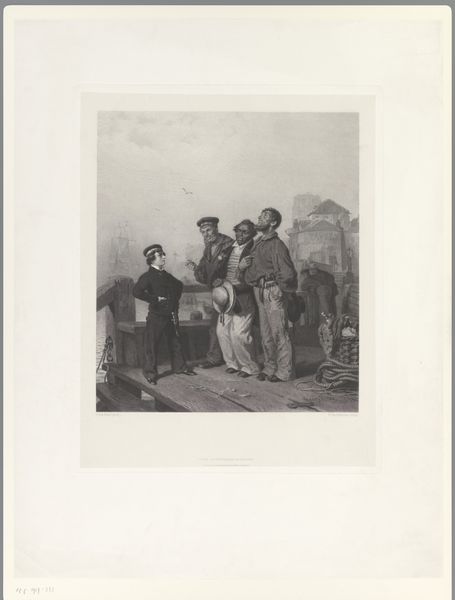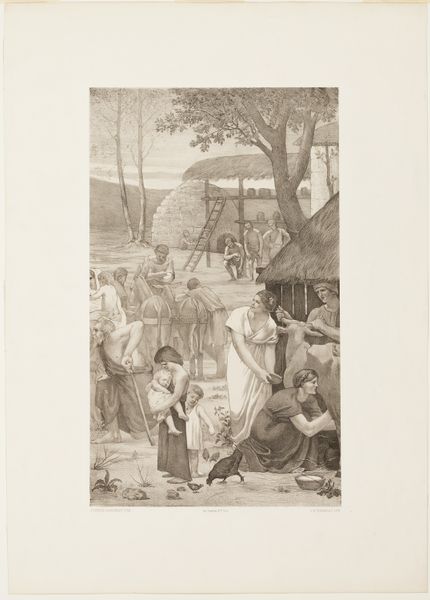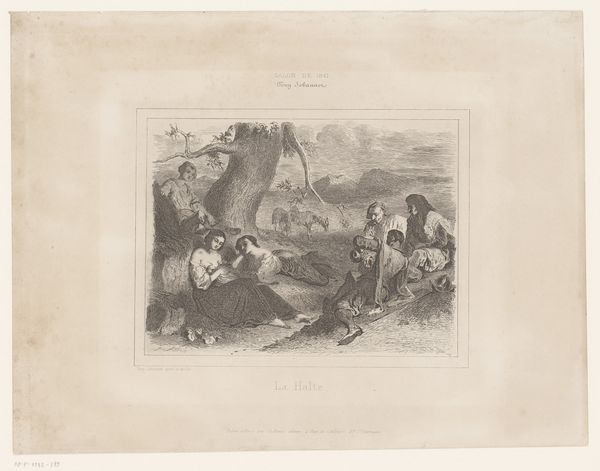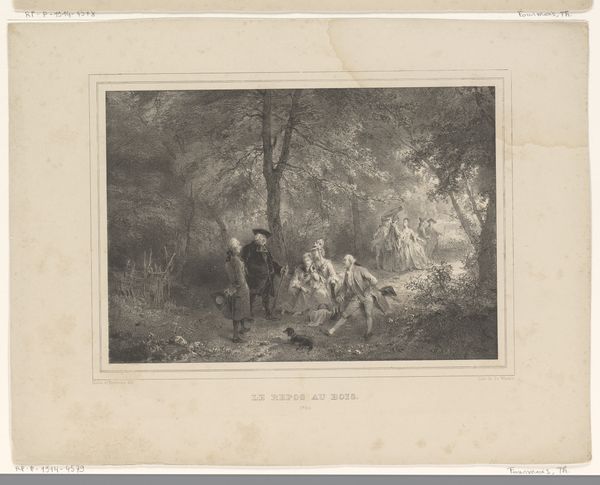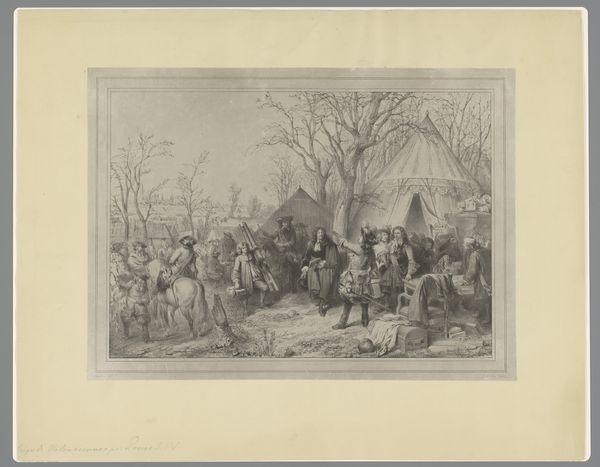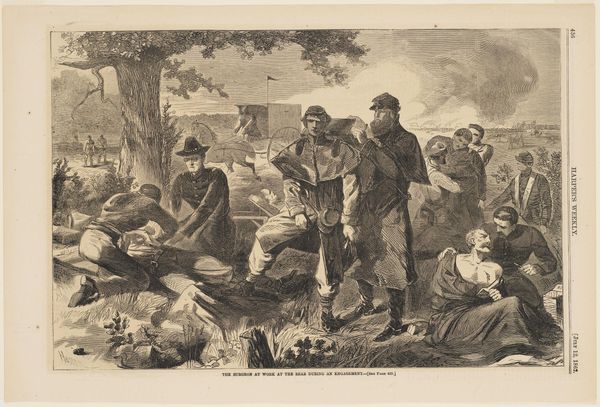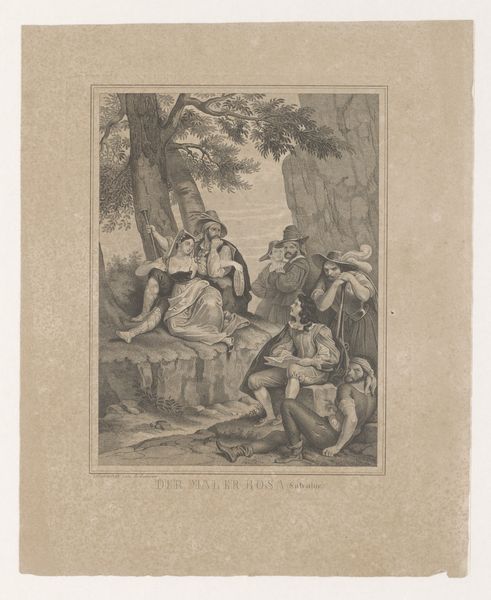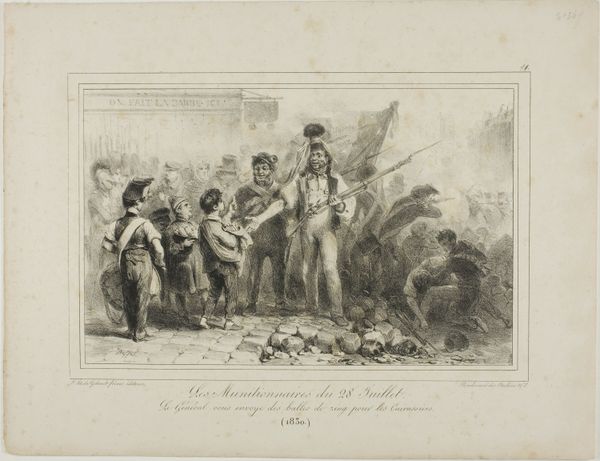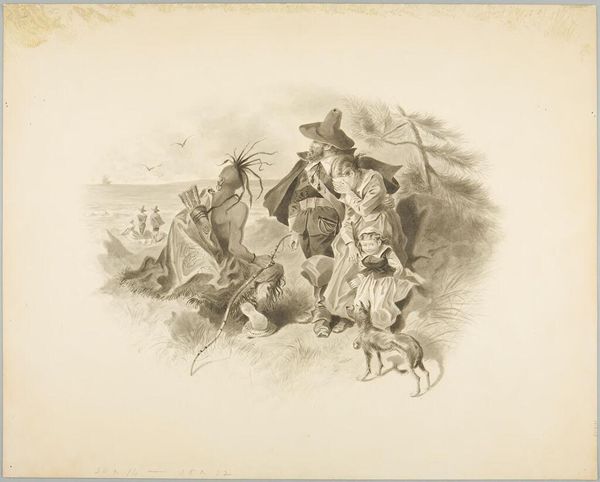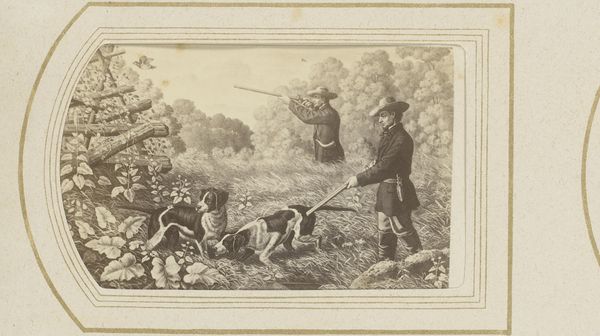
drawing, lithograph, print, paper, pencil
#
portrait
#
drawing
#
lithograph
# print
#
paper
#
pencil drawing
#
pencil
#
line
#
genre-painting
#
history-painting
#
realism
Dimensions: 360 × 280 mm (sheet)
Copyright: Public Domain
Curator: It’s got that worn, seen-it-all feel. A bit brooding, but grounded somehow. Editor: That’s an interesting take! This is "Campaign Sketches: A Pass Time - Cavalry Rest," a lithograph created in 1863 by Winslow Homer. He captures a seemingly quiet moment amid the American Civil War. The work utilizes primarily pencil and paper. Curator: The figures gathered there, under those spindly trees – are they just passing time, as the title suggests? There's something melancholic, yet familiar about them. Did Homer experience this war? Editor: He did. As a war correspondent, his illustrations for *Harper's Weekly* brought the front lines to the home front, so to speak. That makes me wonder how he sees the relationships between the figures; does he portray them as friends? Is one enslaving another? He could very well know them, seeing how this "past time" is actually fraught with trauma and suffering. Curator: Perhaps it is not as clear cut...it might just as easily show a comradery among soldiers as it does show the class distinctions between them, that so marked military service during the war. And yes, the crosshatching gives it a kind of documentary realism, while the poses are surprisingly intimate. It’s the details, really – the textures, the weariness in their posture...you almost smell the smoke and dirt. Editor: Yes, but the "smoke and dirt" can't erase the historical realities of that era. By observing who the soldiers are—White and thus given the liberty of choosing whether they participate in battle or not—vs the enslaved people—Black and who were deprived of any liberty—then we could better see the artwork's statement in championing social justice, for instance. Curator: Do you think, then, that Homer sees some level of universality in rest, even in conflict? He shows all individuals in a position of contemplation—some leaning and whispering to one another, while others seemingly alone in their minds, just relaxing against tree trunks. Editor: Ultimately, artworks offer an incredible opening for critical engagement. What Homer thinks, or even what he is trying to represent, should remain separate from what impact and meaning that art has on today's viewer and his relationship with our past and future struggles for equality. Curator: I agree—that’s an enriching thought with which to end our discussion. To go beyond one single individual vision and let a community build around it.
Comments
No comments
Be the first to comment and join the conversation on the ultimate creative platform.


